How and Why to Thin Fruit Trees
Learning how and why to thin fruit trees is crucial. Have you ever thought… “My peach tree only produces small hard fruit.” Or… “My apple tree’s fruit tastes good, but all the fruit is so small!”
Properly thinning your fruit trees can change the tree from one that’s nice to look at to one whose fruit you look forward to and enjoy!
Why thin fruit trees?
Along with regular pruning, thinning fruit trees is vital in promoting larger, healthier fruit production. Removing excess fruit allows the tree to focus its energy on fewer fruits, resulting in bigger and better-quality harvests. Learn more about how and when to prune fruit trees in this guide.
Thinning also helps prevent limb breakage due to heavy fruit loads and encourages proper air circulation, reducing the risk of diseases.
Why thin fruit trees? Most fruit trees set more fruit than they can support
Why thin fruit trees? The answer is simple: most fruit trees set more fruit than they can adequately support. While pruning before the season begins helps reduce the potential fruit load, thinning the remaining fruit on most trees is still necessary. Thinning ensures that your tree can allocate its energy to fewer fruits, resulting in larger, healthier harvests.
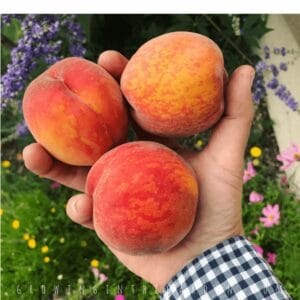
Thinning the fruit helps produce the large, delicious fruit we like.
Why thin fruit trees? Thinning trees supports the overall health of the tree
Too much fruit uses up all the tree’s stored energy, depleting the tree and making it more susceptible to damage from disease, pests, and sunburn.
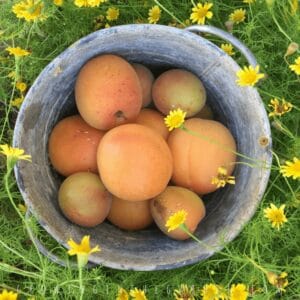
Thinning a tree can reduce its fruit load and prevent limb breakage on branches that cannot support the weight of the fruit.
Why thin fruit trees? Thinning trees produce larger and higher-quality fruit
Too many fruits on a tree compete with each other for the energy stored by the tree. The fruit will be small when there isn’t enough energy (carbohydrates) to go around.
Also, fruit that touch each other can quickly spread diseases like brown rot because air circulation is limited. Fruits that have been thinned will have better air circulation and prevent this problem.
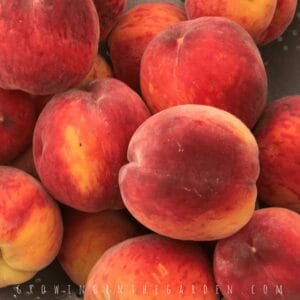
Thinned peaches grow larger than those that were not thinned.

Learn more about how to plant and grow peach trees in this article.
What about thinning fruit on newly planted trees?
Remove most (if not all) fruit on most trees for the first two or three years. Wait to see which blossoms set fruit and then remove the fruit rather than removing the blossoms. This allows the energy to go to the structure and root system of the tree rather than the fruit. Heavy fruit can also damage branches on young trees.
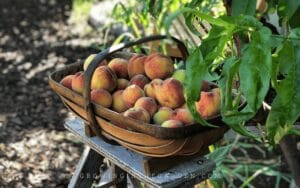

Labeling your trees helps you to remember when the tree was planted. These are the labels I use from Amazon. Read this article for information about how to label your trees.
Some trees naturally thin themselves to some extent
Unpollinated blossoms wither and fall off, and fruits infested with disease or insects often drop early. Natural fruit drop usually occurs in spring when fruit that the tree cannot support naturally drops from the trees.
Often, this is all the thinning that citrus trees, cherry, fig, pomegranate, persimmon, and nut trees require.
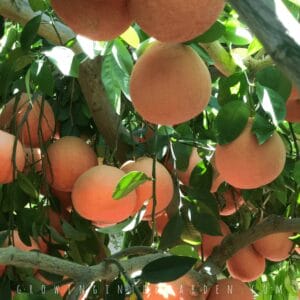
Check the load on the young tree’s branches to ensure the branch can support the weight of the growing fruit.
Types of fruit trees that require additional thinning
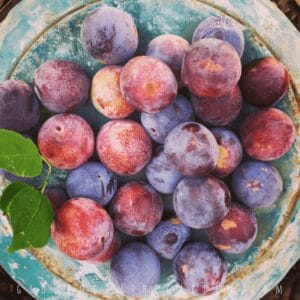
Stone Fruits – (plums, peaches, cherries, apricots, etc.)
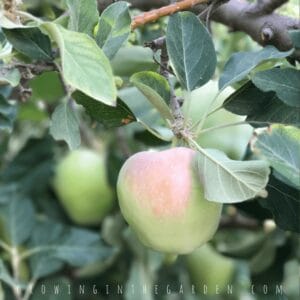
Pome Fruits – (most pears and all apples)
When is the best time to thin fruit?
The best time to thin fruit is within a month after full bloom. By thinning during this crucial period, you maximize the chances for the remaining fruit to grow larger in size. Waiting too long to thin may result in less significant improvements in fruit size.
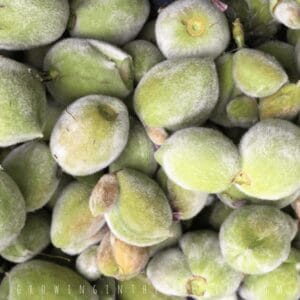
The fruit should be thinned before it is an inch in diameter, if possible.
How much fruit should I remove from the tree?
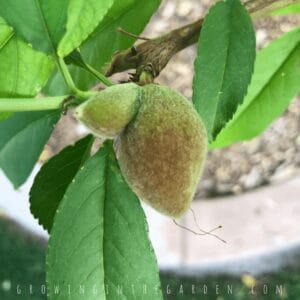
Remove fused or double fruit, as well as disfigured or damaged fruit.
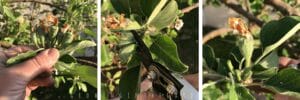
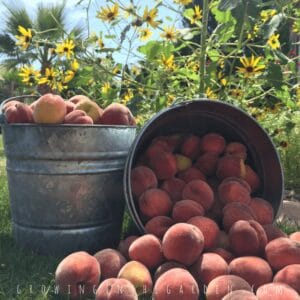
Invest a little time thinning your tree at the beginning of the season, and your tastebuds will thank you later! Happy thinning, and enjoy the delicious rewards!

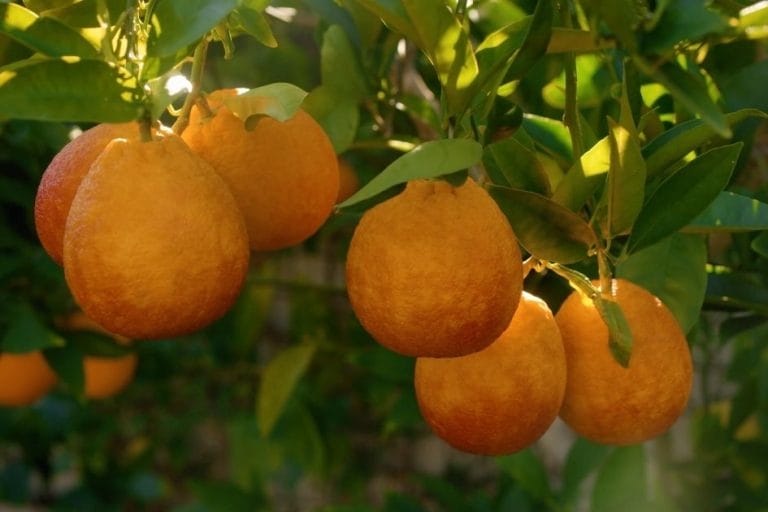
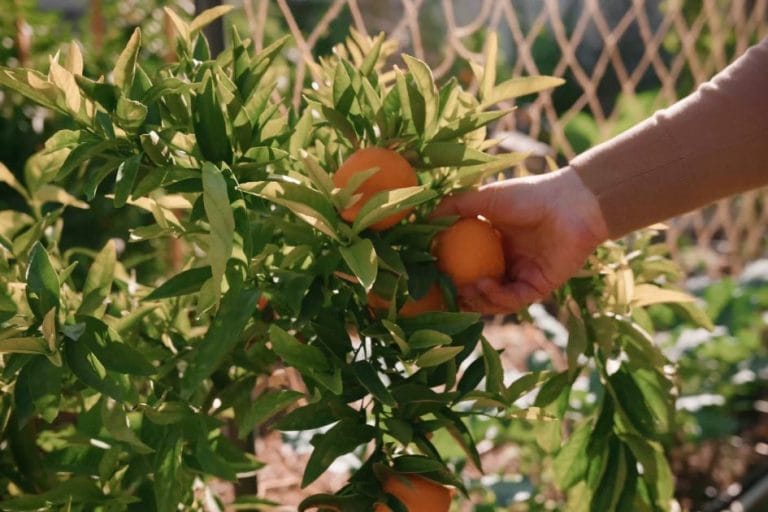
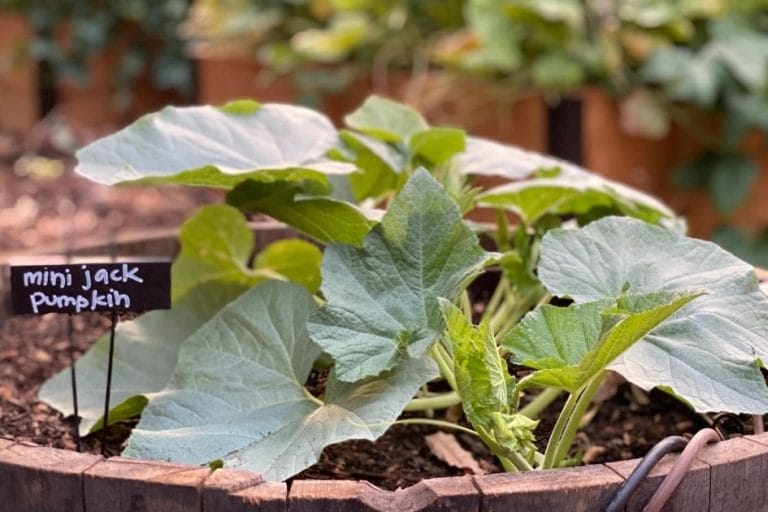

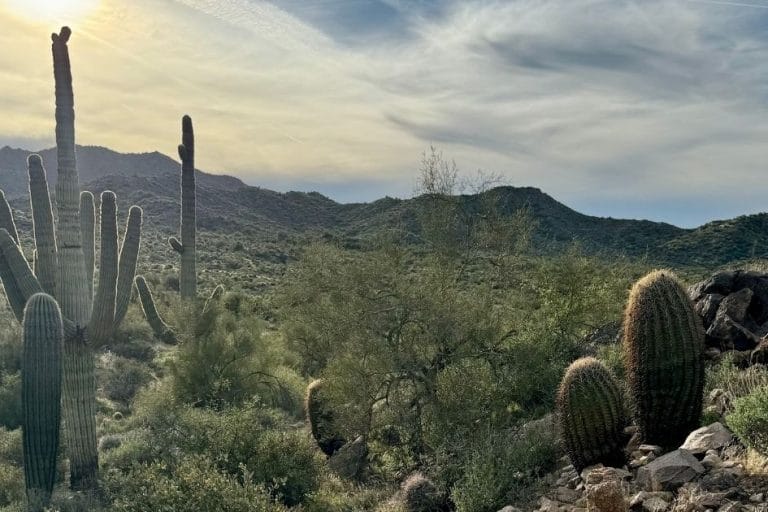
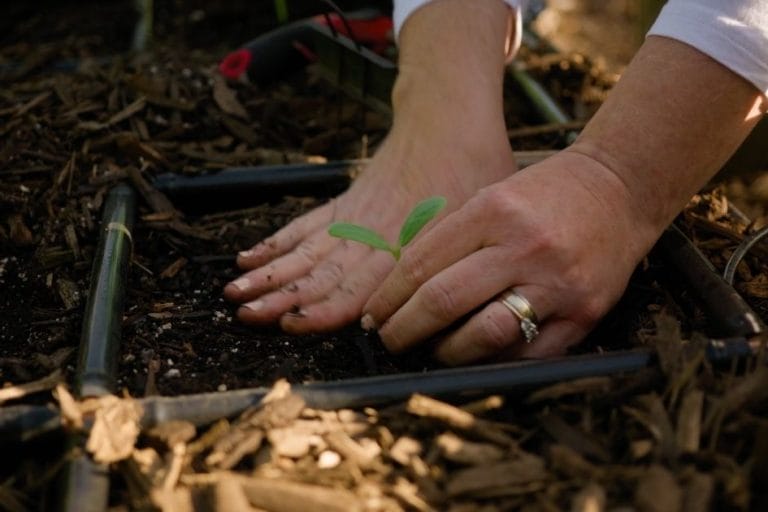
this was so helpful! If my peaches are bigger than an inch in diameter, should I still thin them or is it too late?
Yes, I would still thin them a bit if you have plenty of fruit on the tree. If your tree has a small amount of fruit (like mine does this year because of the mild winter) I would just thin them lightly. Once they reach a certain size it isn’t as effective to remove fruit.
We thought we had thinned our peach tree enough, but we obviously didnt because we now have major branches broken from fruit weight. Is there a specific way to cut off those branches and WHEN?
It’s heartbreaking to thin peaches, but a necessary part of growing trees. The best time to prune fruit trees in Arizona is when it’s cold and the trees are dormant. Avoid leaving large sections of the tree’s bark exposed to direct sunlight. Once temperatures dip a bit and the heat of summer is past, look for the collar of the branch you need to cut. The branch collar is the area around where the branch is growing out of the tree. To find it look for a ridge, an area where the bark is thicker. Make your cut there and then the tree can form a callous over the cut.
I’ve just started some new trees and follow the recommendations. In past my nectarine tree that was over loaded with fruit lost all fruit to brown rot
This is simple article written for non professional….I like it
Thanks will post updates after following recommendations
I read this too late unfortunately. I was wondering why my trees didn’t produce fruit this year. This certainly would explain it. Any tips on how to rehabilitate the tree this season?
For this season it may be too late to get large fruit. Remove the fruit and be sure to prune the tree when it’s dormant and then thin the fruit next spring. It should recover well.